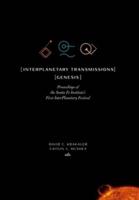Publisher's Synopsis
The water of the human body can be categorized as existing in two main compartments: intracellular water and extracellular water. The intracellular water consists of all the water within the cells and constitutes over half of the total body water. Since red blood cells are surrounded by plasma, and all other cells are surrounded by interstitial fluid, the intracellular compartment has been subdivided to represent these two cell types. The extracellular water, which includes all of the fluid outside of the cells, can be further subdivided into compartments which represent the interstitial fluid, circulating blood plasma, lymph, and transcellular water. The interstitial fluid surrounds cells outside of the vascular system whereas plasma is contained within the blood vessels. Avascular tissues such as dense connective tissue and cartilage contain interstitial water which slowly equilibrates with tracers used to determine extracellular fluid volume. For this reason, additional compartments are sometimes used to represent these avascular tissues. The average size of each compartment, in terms of percent body weight, has been determined for adult males and females. These compartments and the forces which cause flow between them are presented. The kidneys, a main compartment, receive about 25 percent of the cardiac output and filters out a fluid similar to plasma. The composition of this filtered fluid changes as it flows through the kidney tubules since compounds are continually being secreted and reabsorbed. Through this mechanism, the kidneys eliminate wastes while conserving body water, electrolytes, and metabolites. Since sodium accounts for over 90 percent of the cations in the extracellular fluid, and the number of cations is balanced by the number of anions, considering the renal handling sodium and water only should sufficiently describe the relationship between the plasma compartment and kidneys. A kidney function model is presented which has been adapted from a ...










